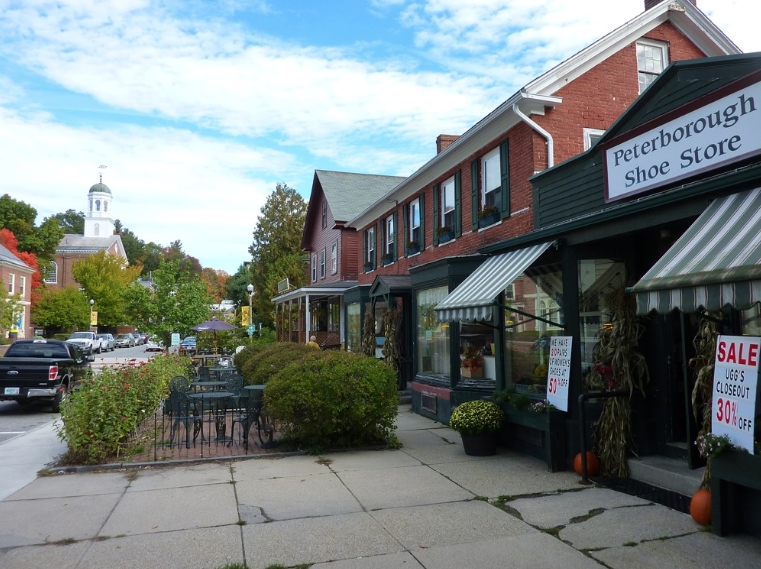“I highly recommend Jeff for any business owner or leader looking for a trusted ally, confidant, sounding board, coach.”
Masiello Employment Group, Keene, NH
Call Jeff Saari at 603-762-4866 for a free consult.
Leadership Coaching for Peterborough NH area manufacturing businesses and non-profits
We are helping leaders in Peterborough NH improve their management style, become better at prioritizing, reduce stress and become more overall emotionally intelligent.
Jeff Saari, CEO of Workplace Culture Solutions and Visionary Coaching LLC, founded his company in 2007. His enthusiastic passion and life purpose is to support leadership and cultural excellence in businesses and organizations. He works with leaders to achieve a maximum level of emotional intelligence to share with their organizations. Jeff teaches communication and meeting facilitation skills, practices one-on-one and group coaching, and leads organizational retreats.
We work to improve your personal management skills on a long term basis!
We specialize in improving the following:
employee performance and commitment,
communication,
being on purpose,
collaboration,
role clarity,
getting the right things done,
self-mastery, and
dealing with fear and frustration.
Please call Jeff saari at 603-762-4866 with any questions about his coaching.
“My mission is to help create healthy leaders, healthy teams, and healthy businesses through coaching engagements.”
SIGNUP FOR A FREE 30-MINUTE LEADERSHIP TRAINING SESSION.
LEADERSHIP BLIND SPOTS
I think most of us have been in the position of going to change lanes in our car only to be honked at. Simply put, the other driver was in our blind spot — that area to the right or left of the vehicle that nothing can be seen from the side mirrors. If you are going slowly, this “blind spot” mistake can cause a scare or a fender bender or simply an inconvenience. Going fast it can cause major damage, injury or death. Our leadership is analogous to this concept because what we don’t see about ourselves can have a minor or major impact on our business or team.
Behaviors you can’t see
In my work with leaders all around the Monadnock Region, part of my role is to ferret out these blind spots so we can drive more soundly and safely. A blind spot is just that, a behavior that you can’t see; it is just part of how you act and hasn’t been open thus far to self-scrutiny. The blind spot usually isn’t intentional, yet it is there. Leadership blind spots run the gamut: avoidance, impatience, interrupting people, aggression, leading bad meetings, not sharing information, and not setting clear expectations, to name a few. For example, I recently sat down with an executive director who is having trouble with an employee of many years. The “problem employee” is also a manager and was plagued with many leadership blind spots. The executive director hired me to help this manager become more attuned to the blind spots and work on ways to overcome them. The blind spots have grown to such a degree that employees neither liked nor trusted him.
Everyone has blind spots
I think we can all relate to this above example. But let me make it clear: Everyone has blind spots! Even the most conscientious leaders among us have them from time to time. At first, when you are on the path to emotional intelligence it can feel unsettling to discover your blind spot(s). As leaders and managers, we can get avoidant, get defensive, or beat ourselves up internally when the discovery is made. The discomfort of having the light shone on a lesser area of strength can indeed be uncomfortable, but it also can be a great message, a great opportunity to grow, learn and collaborate. So try this: If you want to know how you impact others in your organization, simply ask them. It may take time to build a trusting culture where people feel comfortable actually telling you their truth, but it will be worth it in the long run if you are genuinely curious and persistent. Another option is to do a 360 Degree Feedback* to have a cross-section of people in the business give you feedback. However you obtain this critical information, start on the journey today, it will be well worth it.
For more information check out Leadership Blind Spots, By Jeff Saari.
recent college presentation
Learn more about Jeff Saari’s coaching techniques and how he helped Keene State College students with stress managment.
serving the Peterborough NH area
about peterborough, nh
History
Granted by Massachusetts in 1737, Peterborough was first permanently settled in 1749. The town suffered several attacks during the French and Indian War. Nevertheless, by 1759, there were fifty families settled. The Contoocook River and Nubanusit Brook offered numerous sites for watermills, and Peterborough became a prosperous mill town. In 1810, the first cotton factory was established. By 1859, there were four additional cotton factories, a woolen mill, two paper mills, a carriage factory, a basket manufacturer, and a boot and shoe factory.
Climate/Geography
According to the United States Census Bureau, the town has a total area of 38.1 square miles of which 37.7 square miles is land and 0.42 square miles is water, comprising 1.06% of the town. The highest point in Peterborough is South Pack Monadnock Mountain (2,290 feet above sea level), in Miller State Park.
Government
The Township of Peterborough was incorporated on January 17, 1760 by Governor Benning Wentworth, it was named after Lieutenant Peter Prescott (1709–1784) of Concord, Massachusetts, a prominent land speculator. Towns were the principal units of local government in colonial New England, providing schools, poor relief, roads, and other necessary services. The town meeting, an assembly of all enfranchised townspeople, was the primary decision-making body, but over the course of the colonial period the elected selectmen seemed to grow increasingly important in determining town policy.
Tourism
Jeff Saari offers Peterborough NH area businesses leadership consulting.
Peterborough is home to the Edward MacDowell Dam and Lake recreation area, where visitors can walk across the dam, hike, cross-country ski, swim, boat, picnic, play Frisbee golf, horseshoes or other recreational opportunities, many of them disabilities accessible. The town was a model for the play Our Town, written by Thornton Wilder while in residence at the MacDowell Colony. His fictional town of Grover's Corners appears to have been named for Peterborough's Grove Street.
Source: Wikipedia





